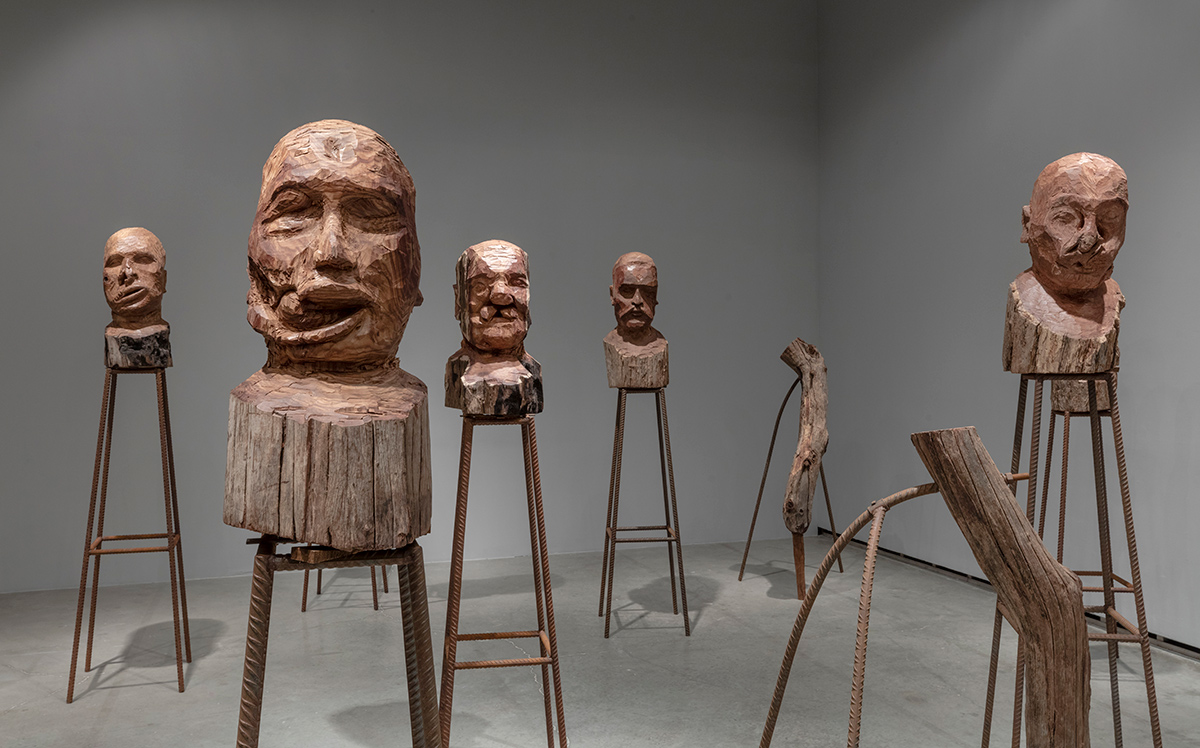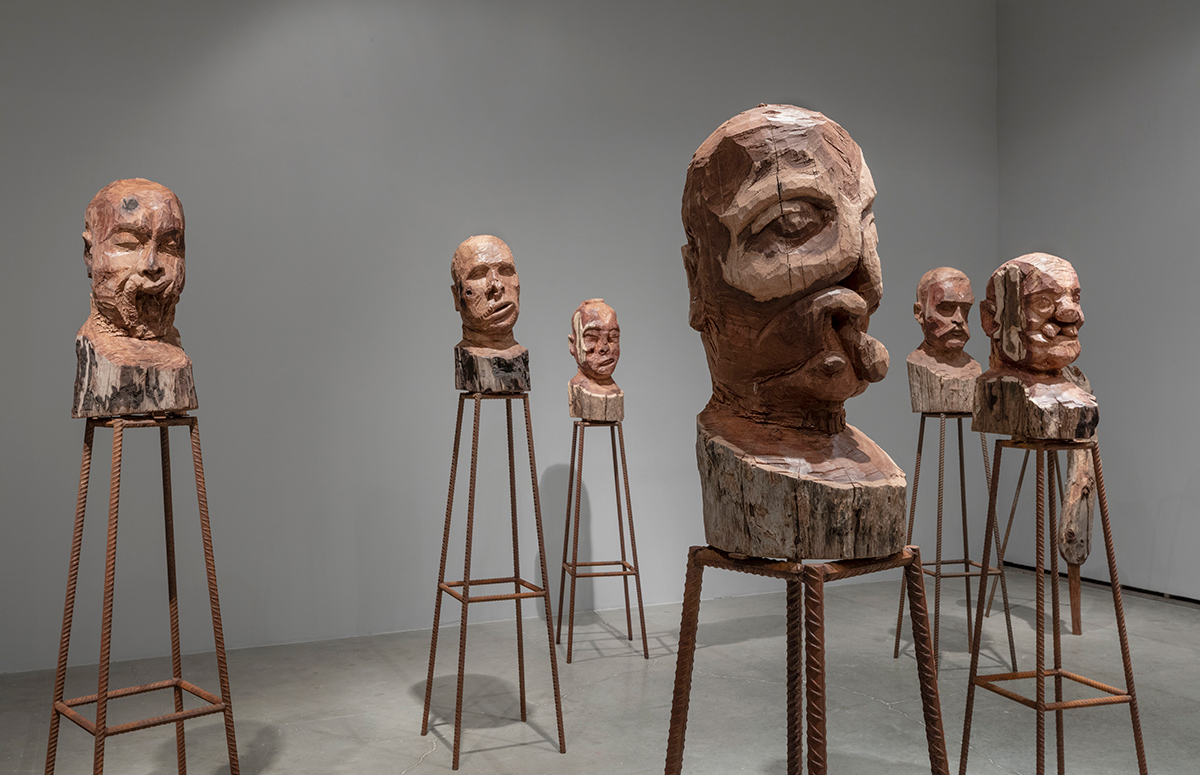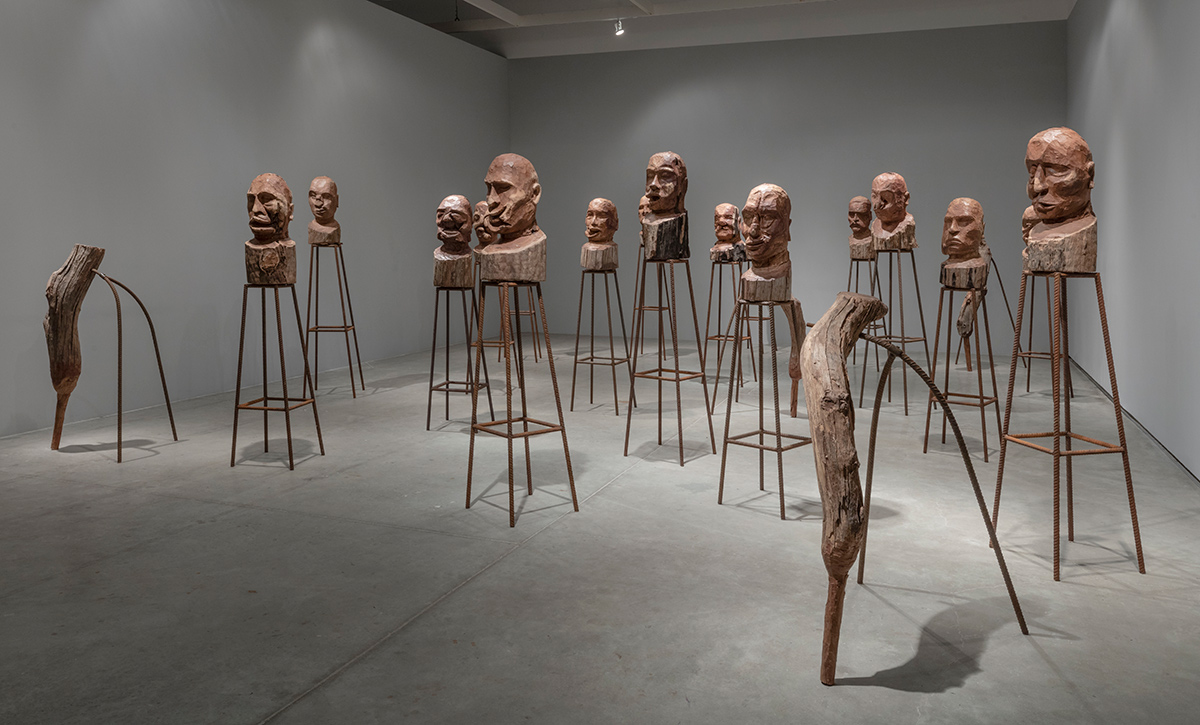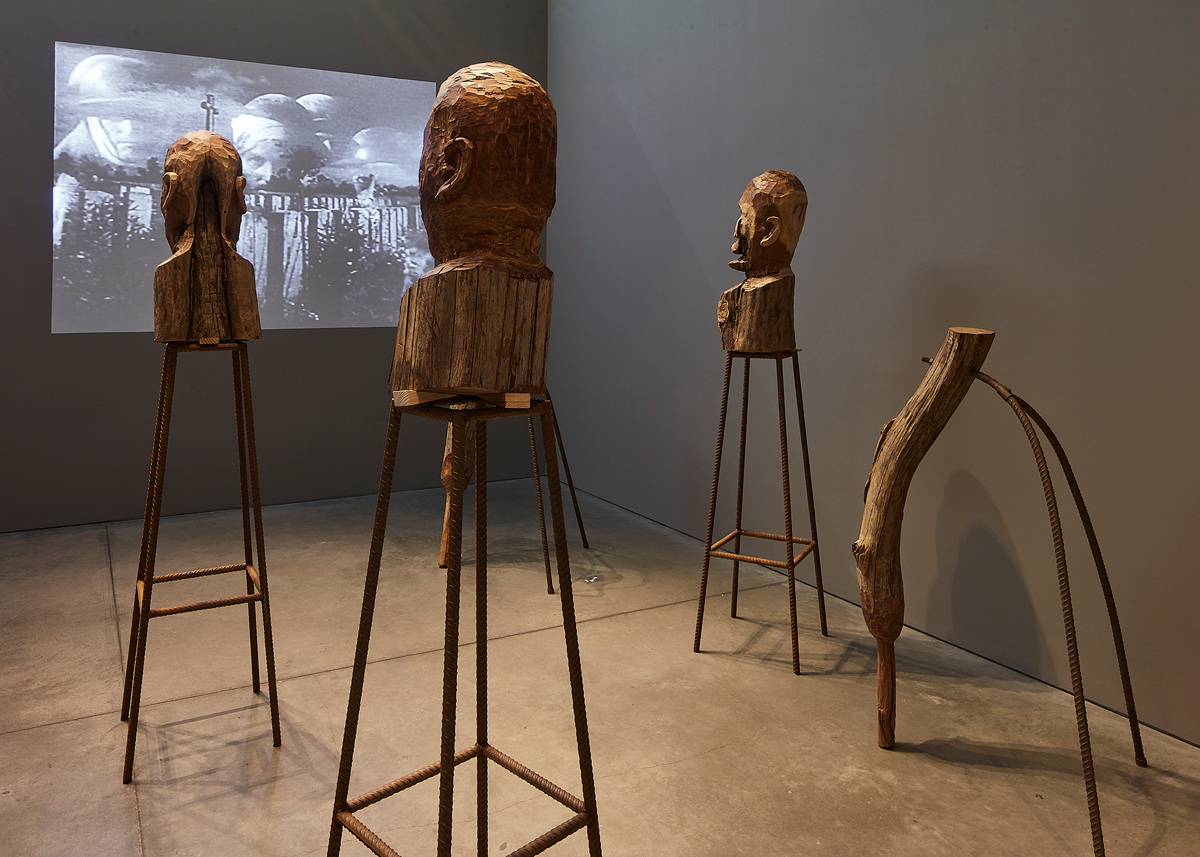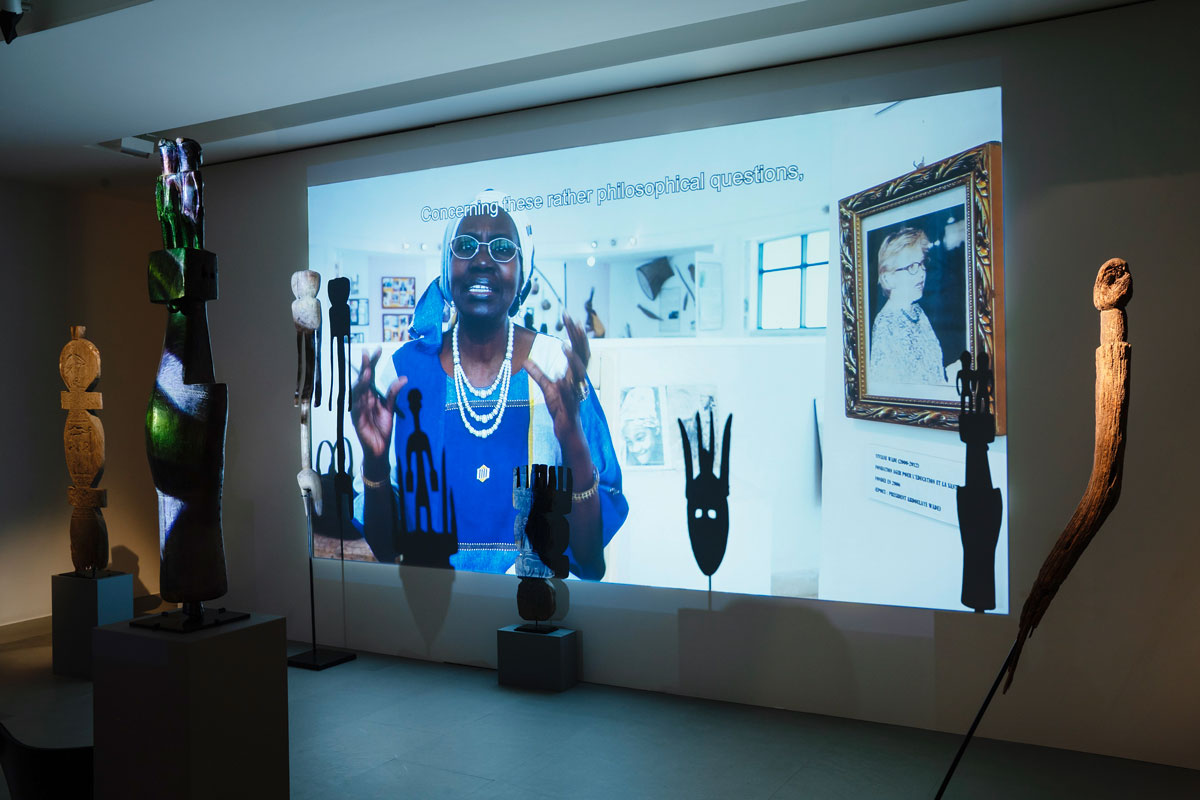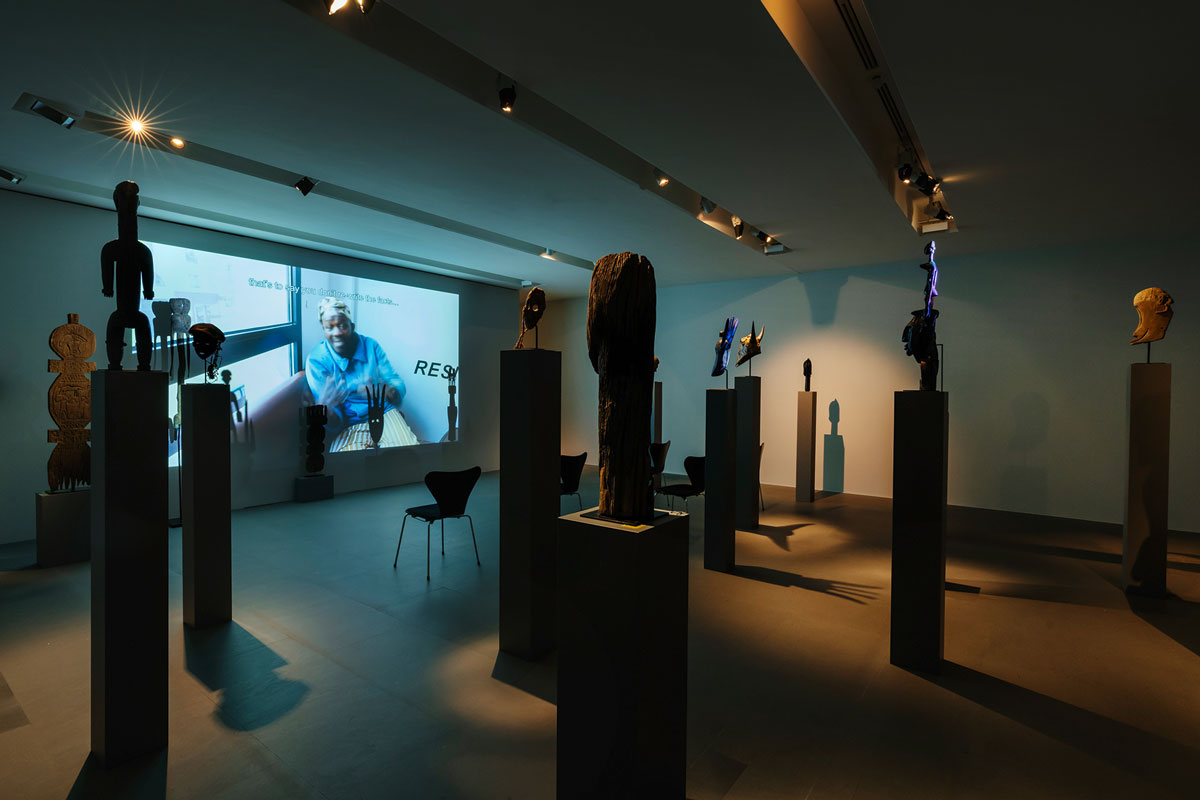ART CITIES: Berlin-Kader Attia
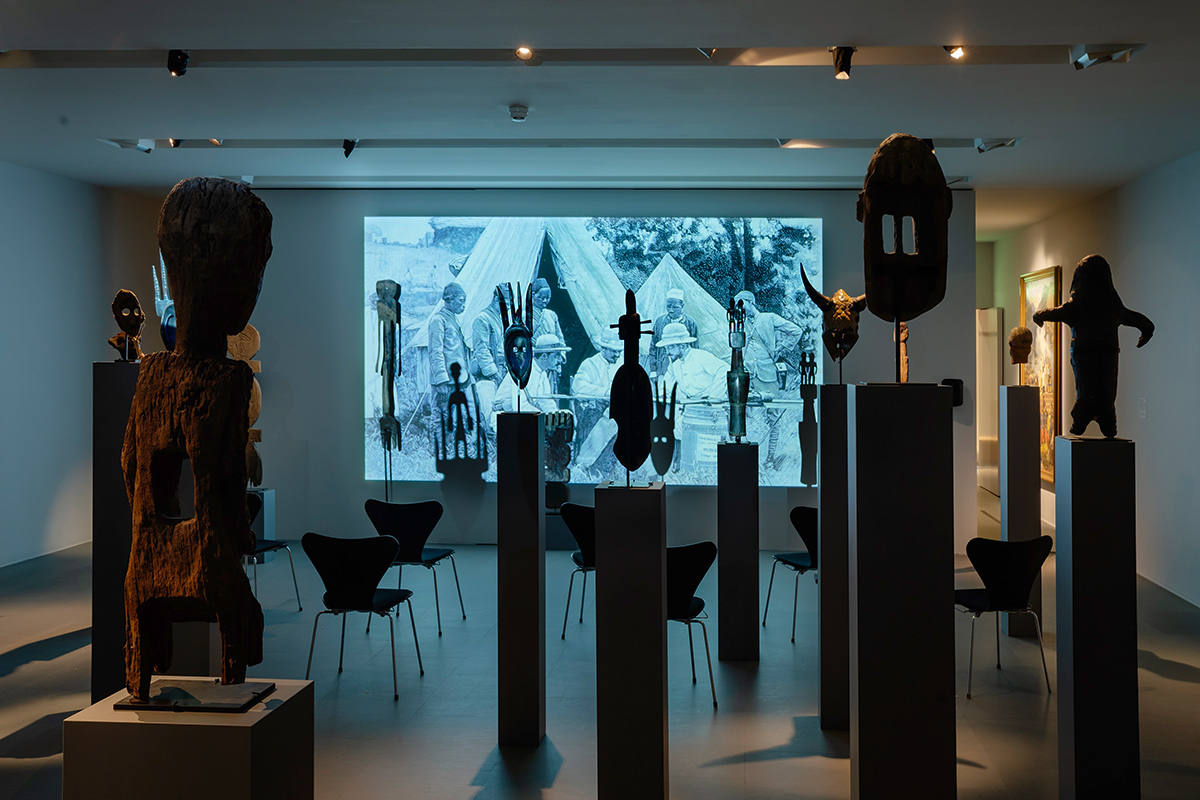 Kader Attia has spent many years exploring the principle of ‘repair’, which he views as a constant in both nature and the history of humanity. He understands every system, social practice, and cultural tradition as an infinite process of repair. For him, injuries and the act of repair should be considered as the starting point for a new form of existence—and their potential utilized for resistance.
Kader Attia has spent many years exploring the principle of ‘repair’, which he views as a constant in both nature and the history of humanity. He understands every system, social practice, and cultural tradition as an infinite process of repair. For him, injuries and the act of repair should be considered as the starting point for a new form of existence—and their potential utilized for resistance.
By Efi Michalarou
Photo: Berlinische Galerie Archive

Kader Attia presents a conversation between two large installations: “J’Accuse” (2016) and “The Object’s Interlacing” (2020), complemented by selected collages by Hannah Höch from her iconic series “From an Ethnographic Museum” (1924–1934). “J’Accuse: (2016) consists of seventeen wooden busts, eight sculptures and an eleven-minute excerpt from an anti-war film of the same name by French director Abel Gance. The title of the work is not only a reference to this film but also to the famous open letter written by Émile Zola to express his solidarity with the Jewish military captain Alfred Dreyfus, who had been falsely convicted of treason. The busts portray “gueules cassées” (broken faces), First World War soldiers who had suffered severe facial disfigurement. This term became symbolic of the war when new fragmentation grenades became the leading cause of injuries. These people and their faces have been a recurring theme in Attia’s work: they represent a large-scale attempt at ‘human repair’, while their scars remain as visible signs and reminders. For “J’Accuse”, Attia translated historical photographs of the wounded soldiers’ faces into sculptures, using African wood as old as the service-men depicted. In doing so, a new act of repair takes place: Attia reminds us of the rarely discussed fact that thousands of soldiers from colonized territories fought in the First and Second World Wars. They were an integral part of the French army in what was named ‘régiments mixtes’. During the First World War, more than 440,000 of these people—many of whom were forcibly recruited—fought for France alone. Abel Gance’s film “J’Accuse” was made twice: once immediately following the First World War, in the wake of its influence, and a second version in 1938—full of rousing hopes of being able to prevent another war. The second version of the film, which is part of Attia’s installation, also featured real soldiers with “gueules cassées”, whom had initially refused to appear in the first version of the film. Attia’s larger-than-life wooden busts stand as silent observers in front of the screen showing the final scenes of Gance’s film: the memorials erected in memory of the fallen come to life, the dead of the battlefields rise from their graves. A warning against the monstrosity of war. The installation is complemented by “The Object’s Interlacing “(2020), which consists of a video work and twenty-two sculptures. In the video, Kader Attia builds a dialogue with various experts about the debate on the topic of restitution of cultural assets violently looted during the colonial era. Together they construct an understanding of restitution as a practice of repair with far broader implications than simply repatriating objects looted from their place of origin. In their reports, the experts in the video denounce the colonial machinery of plunder and its contempt for the ‘local cosmology of life’ (Kader Attia), which is exemplified by the stolen objects. Within such a cosmology, these objects are a living, active force as well as a crucial symbolic, philosophical, and discursive resource that sustains a particular society. The interviewees explain that the colonial powers did not appropriate the objects for their cultural, social, or religious significance, but for their material and market value. The speakers fear that the artefacts themselves have ‘internalized’ their new role over time and, in particular, that they have adopted their characterization as aesthetic or ethno-graphic objects. In this way, the specialists believe, the objects have changed just as fundamentally as the societies to which they belong. ‘When you talk about the restitution of objects,’ asks one protago-nist, ‘where will they return to?’ Will they return merely as commodities, or will they continue to possess their original immaterial qualities? If they are ‘irreparable’, can this ‘irreparable repair’ become a source of creative reinvention despite the enduring colonial asymmetries? The video is projected through a group of reproductions of African artefacts, that include some made out of wood and others that have been 3D printed. The 3D prints are replicas of works from the collection of the Musée du quai Branly, the French national museum for the art and cultures of Africa, Asia, Oceania, and the Americas. There is very little information about these works in the museum’s data-base; for example, the identities of the original artists are unknown. This lack of information is one example of how the former colonial powers treated the cultural artefacts they looted. The objects cast their silhouettes onto the screen, symbolically asserting their own voices in the debate. Together with the visitors sitting between them, they become witnesses to all that is said. Attia’s works are complemented by seven collages by Hannah Höch (1889–1978). Höch is considered one of the ‘inventors’ of photomontage and was the only woman in the Berlin Dada movement. Her work is of exceptional quality and diversity; she is also regarded internationally as one of the most influential artists of classical modernism. In 1916, Dadaism emerged explicitly in opposition to the bourgeois ideals and militarism that arose in response to the First World War. Höch’s collages can also be understood as a reaction to the wounded soldiers of the First World War, who were a common sight on the streets at the time. The works shown in the exhibition are part of the series From an Ethnographic Museum. In them, Höch combines magazine reproductions of non-European artworks with images of parts of the bodies or faces of predominantly white women from the 1920s. She thus creates an aesthetic of fragmentation and repair, which inspired Kader Attia to integrate her works into his solo exhibition. In these works, she adopts an anti-hierarchical approach—the different motifs from various cultural contexts in her collages are all of equal value to her—and counters the stereotypes spread by the mass media. Kader Attia is also fascinated by the ambivalence of Höch’s work, whose expressionist form results from the use of photo fragments representing African objects in a time contemporary with colonization, illustrating the invisibilization of the system of exploitation of these same occupied cultures.
Photo: Kader Attia, The Object’s Interlacing, 2020, © VG Bild-Kunst, Bonn 2024, Courtesy the artist and Galerie Nagel Draxler Berlin/ Köln/ München, © Photo: Kuntshaus Zürich / Franca Candrian
Info: Berlinische Galerie, Berlin’s Museum of Modern Art, Photography and Architecture, Alte Jakobstraße 124 –128, Berlin, Germany, Duration: 27/4-19/8/2024, Days & Hours: Mon & Wed-Sun 10:00-18:00, https://berlinischegalerie.de/
